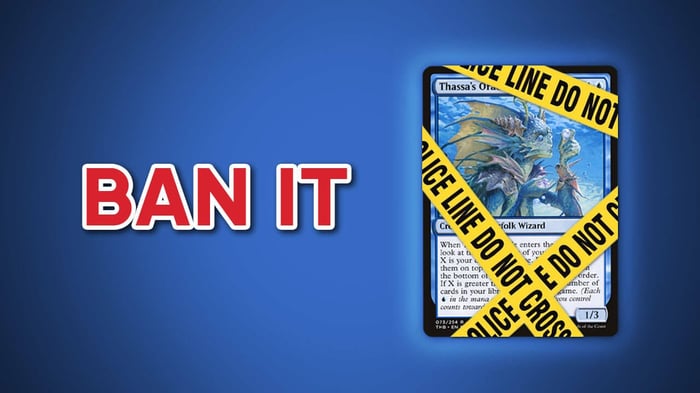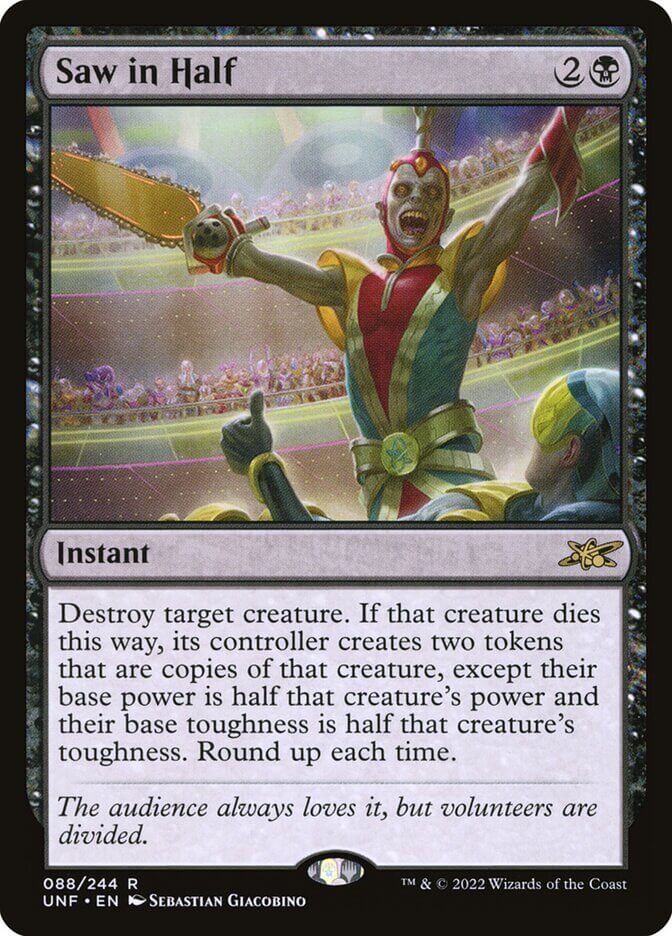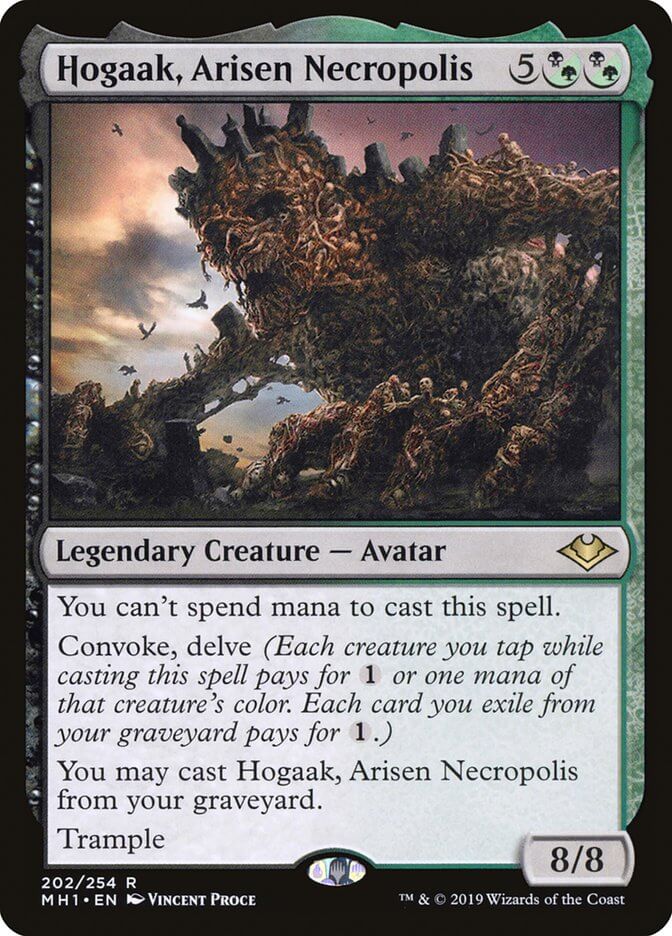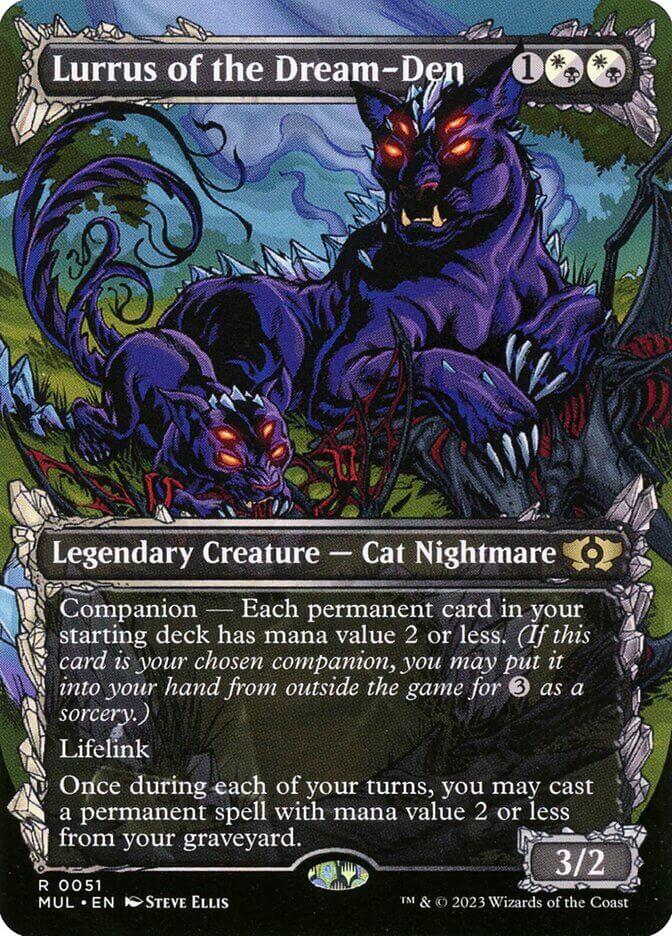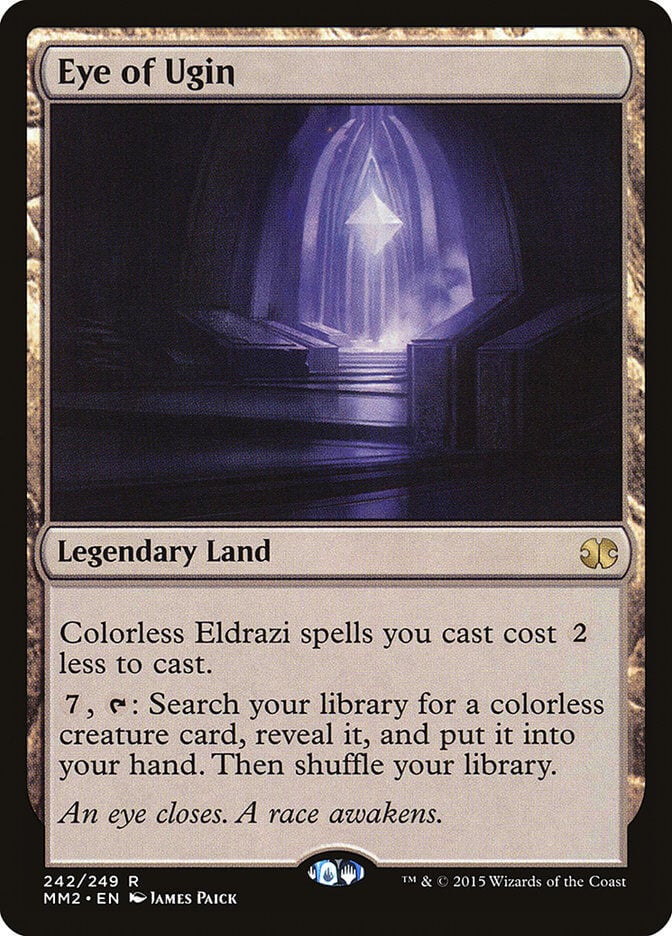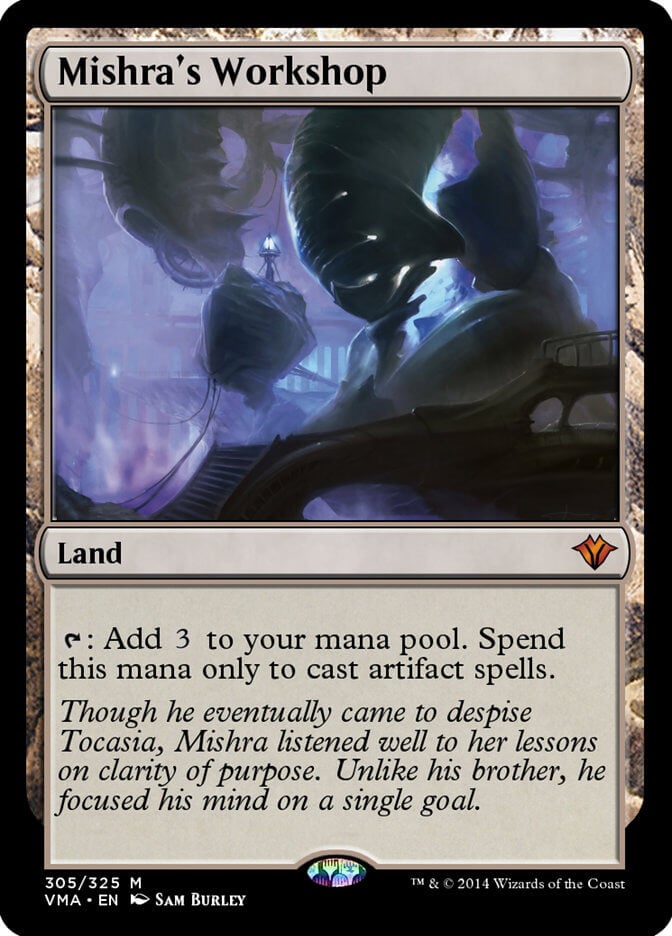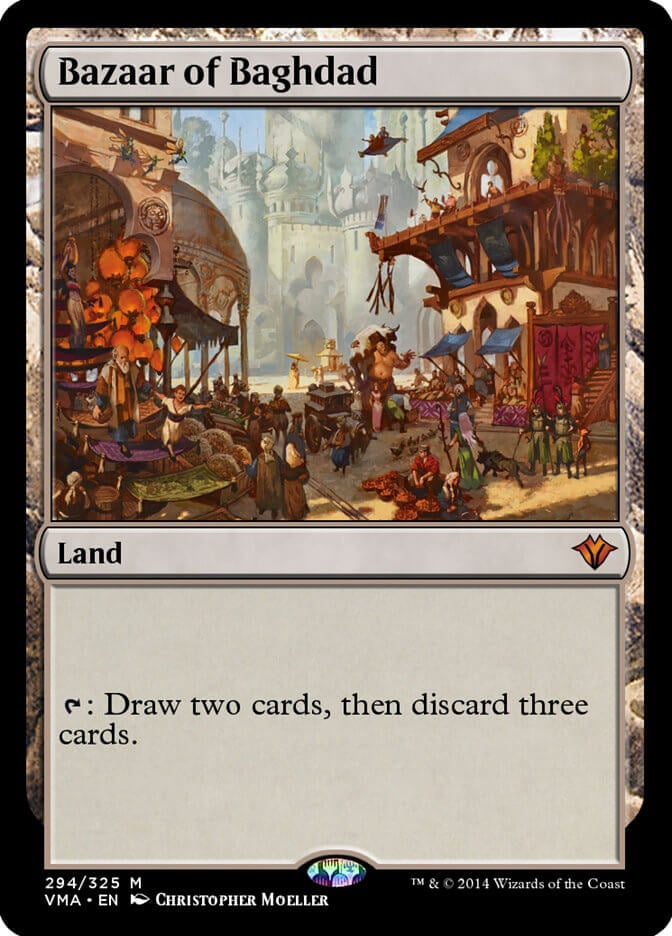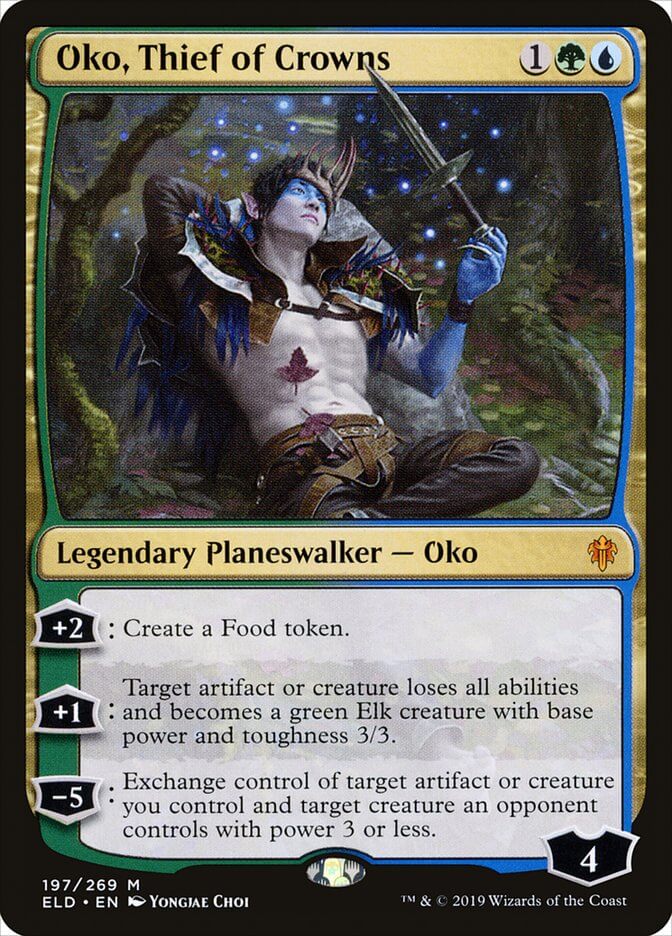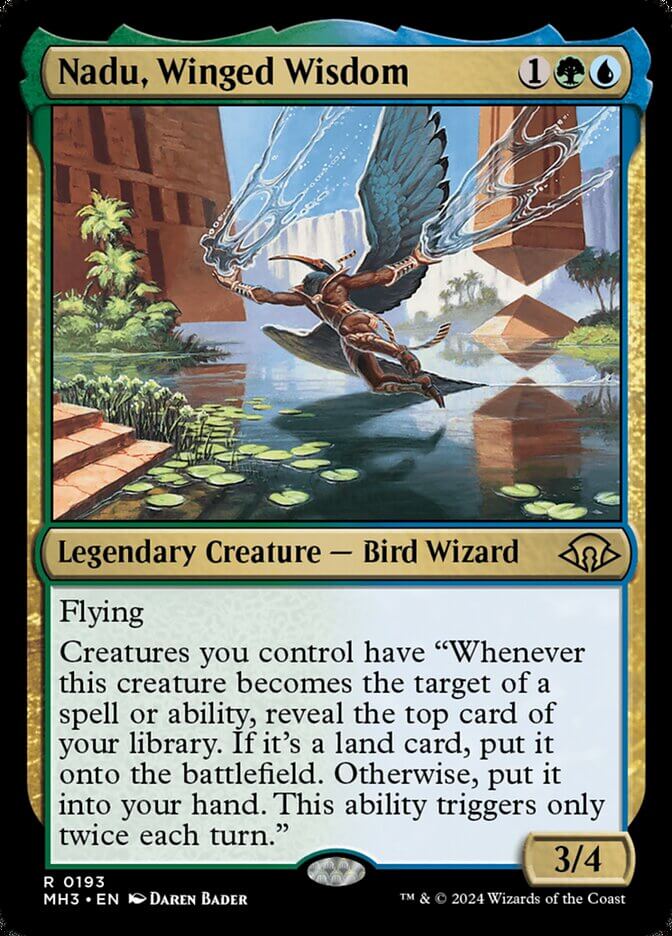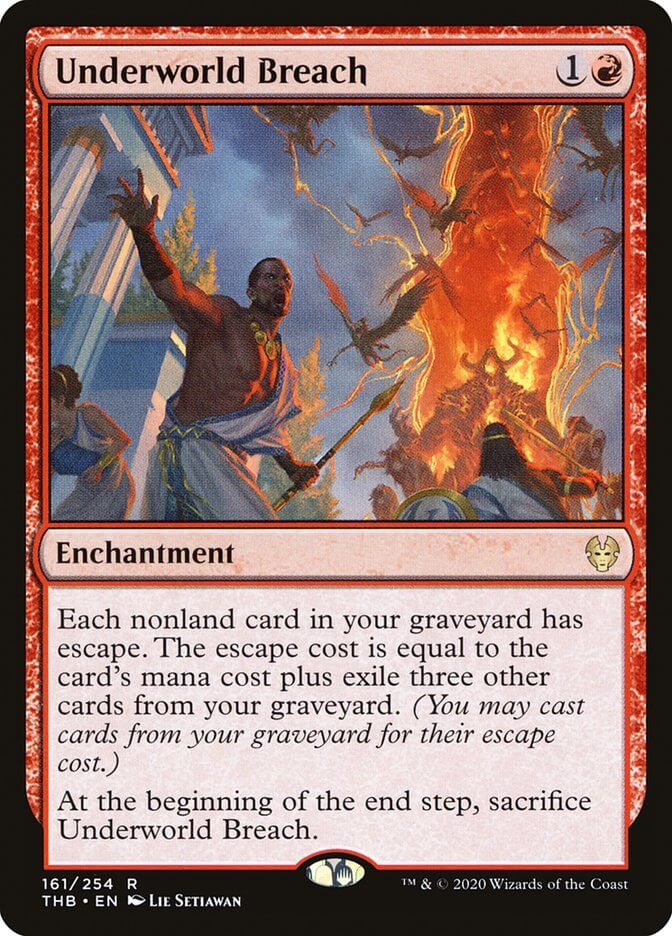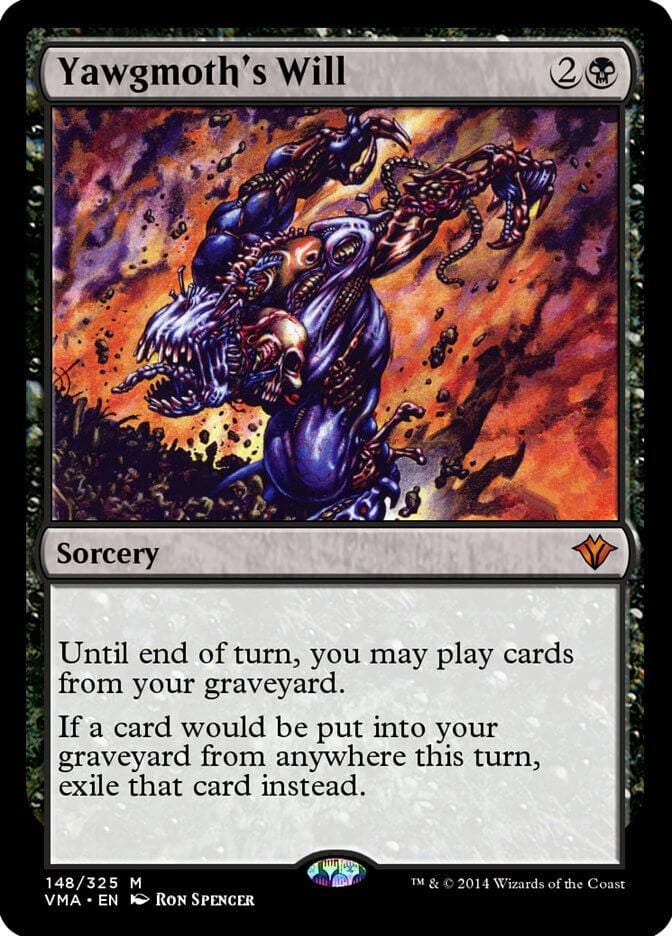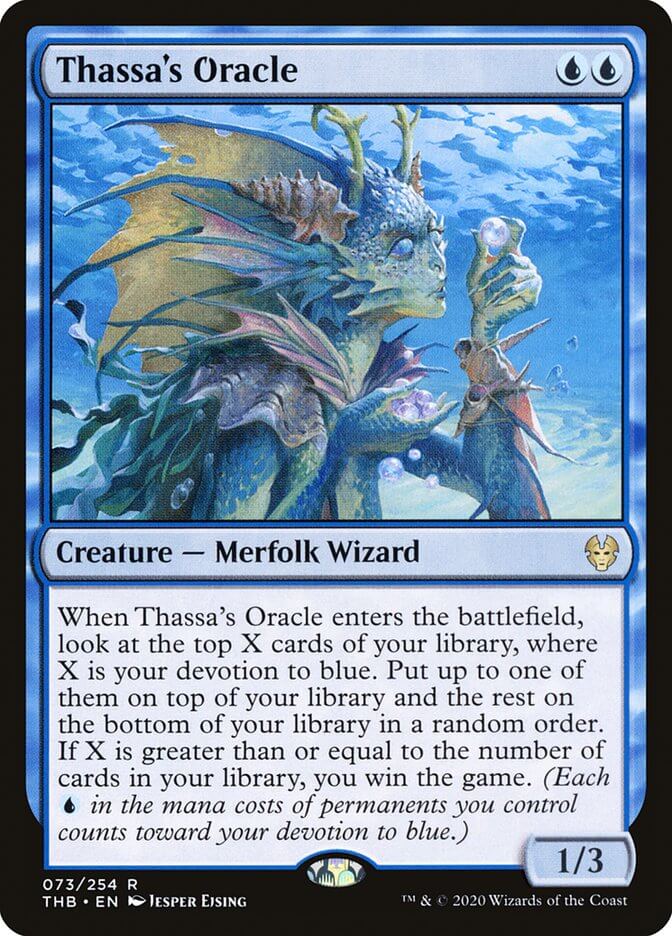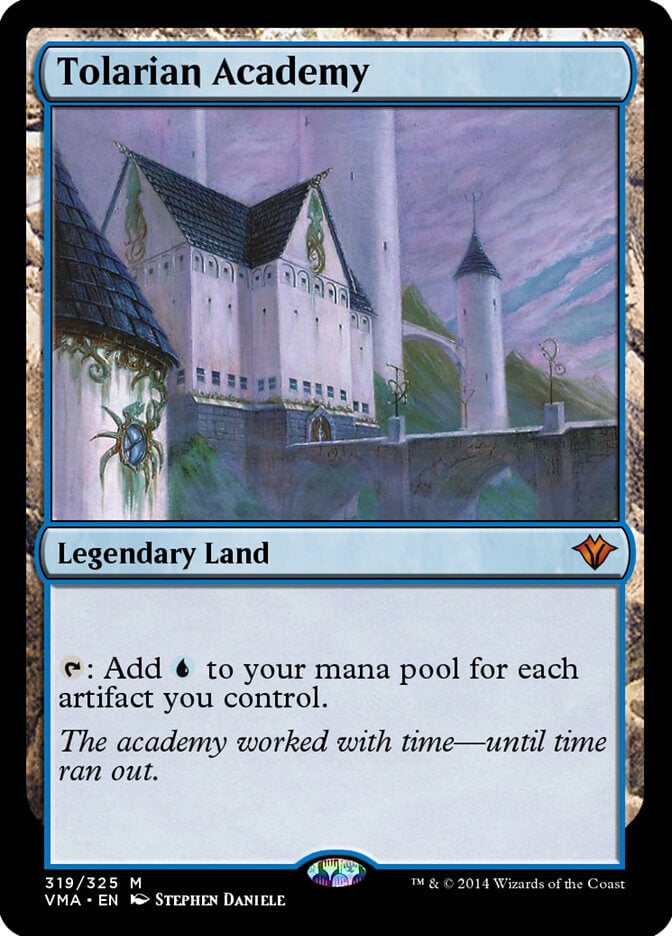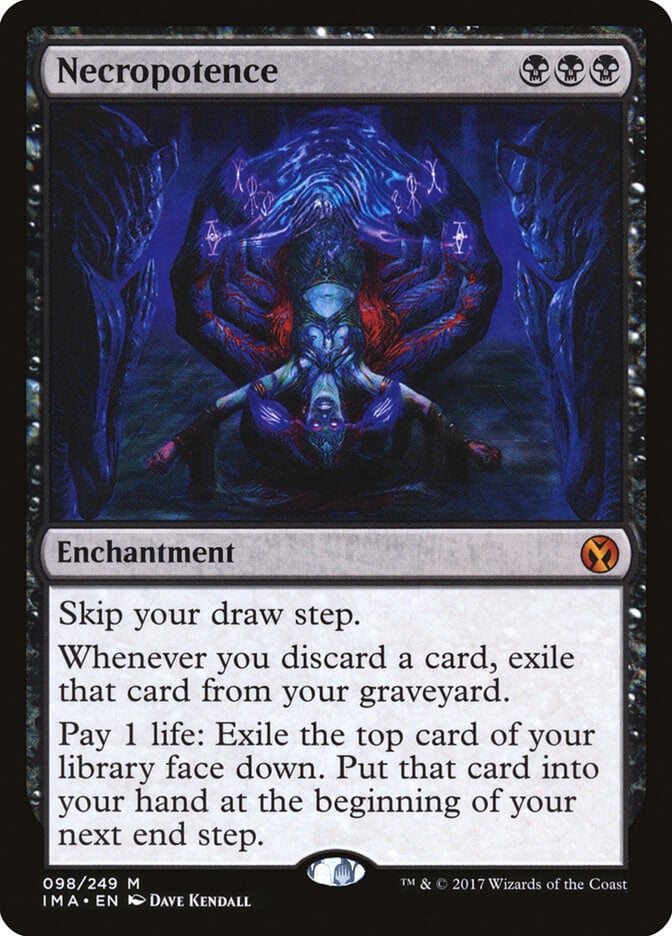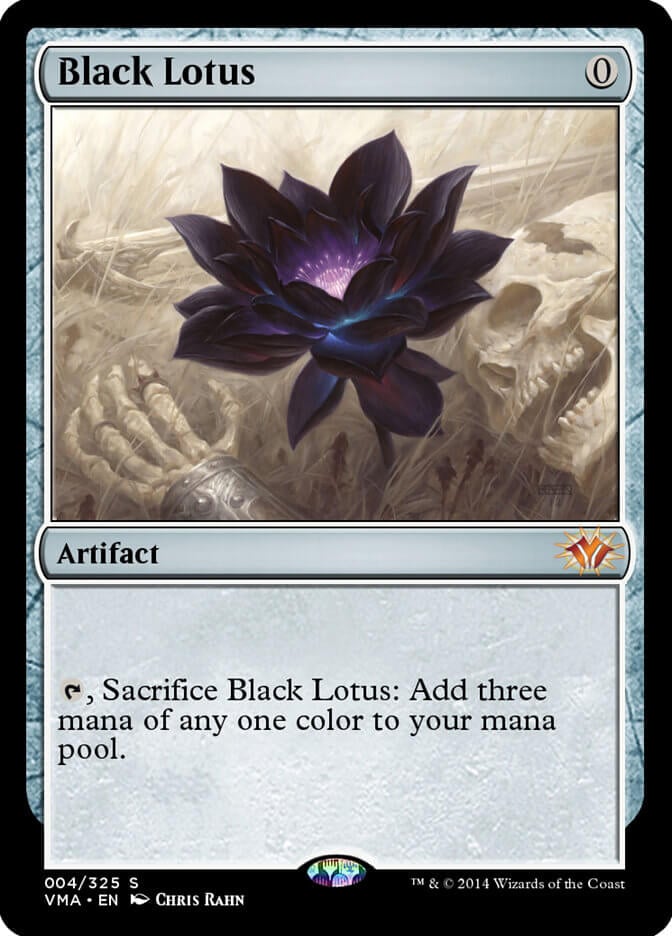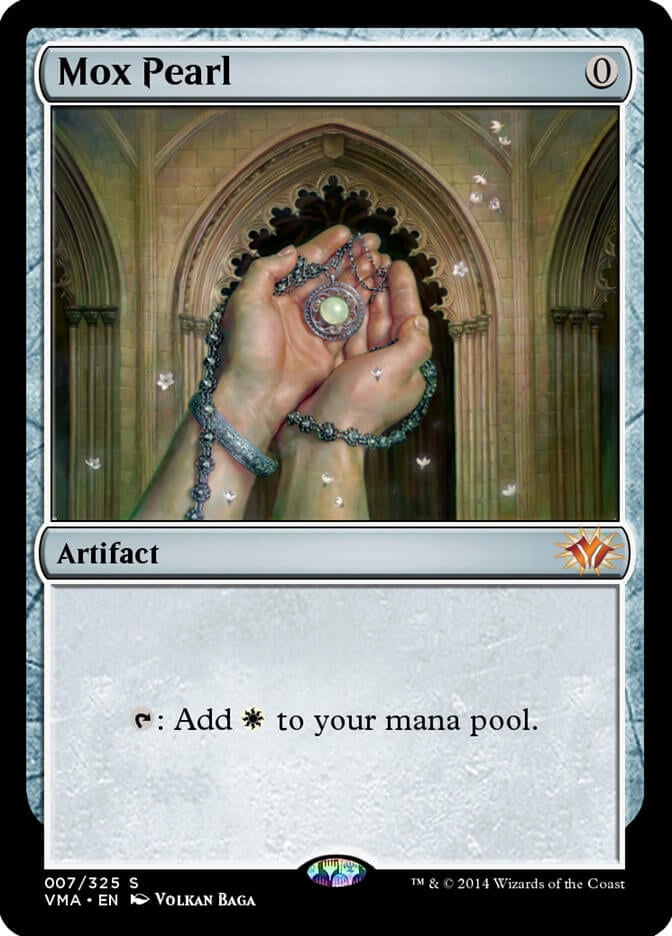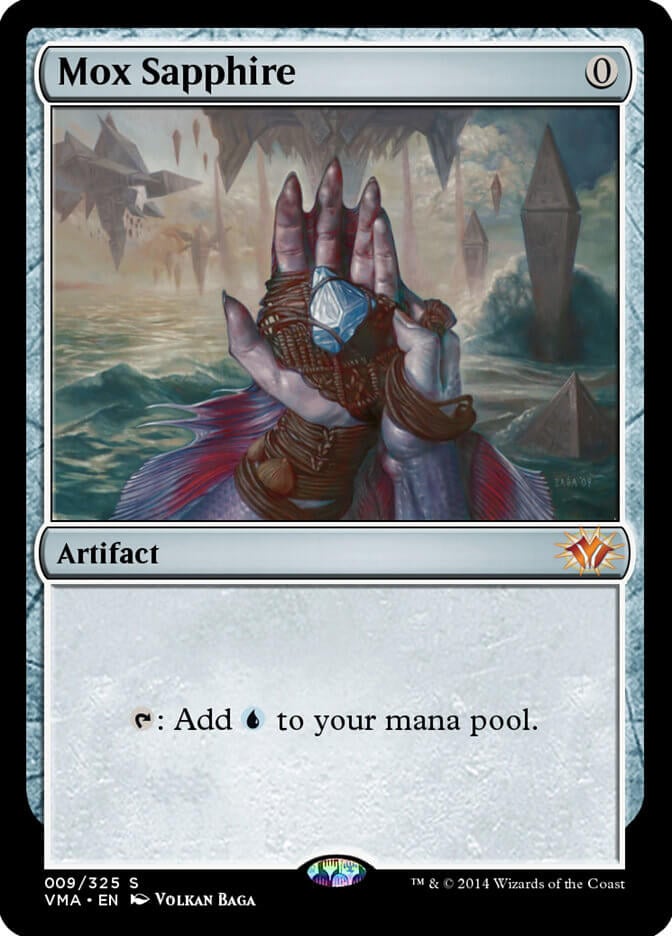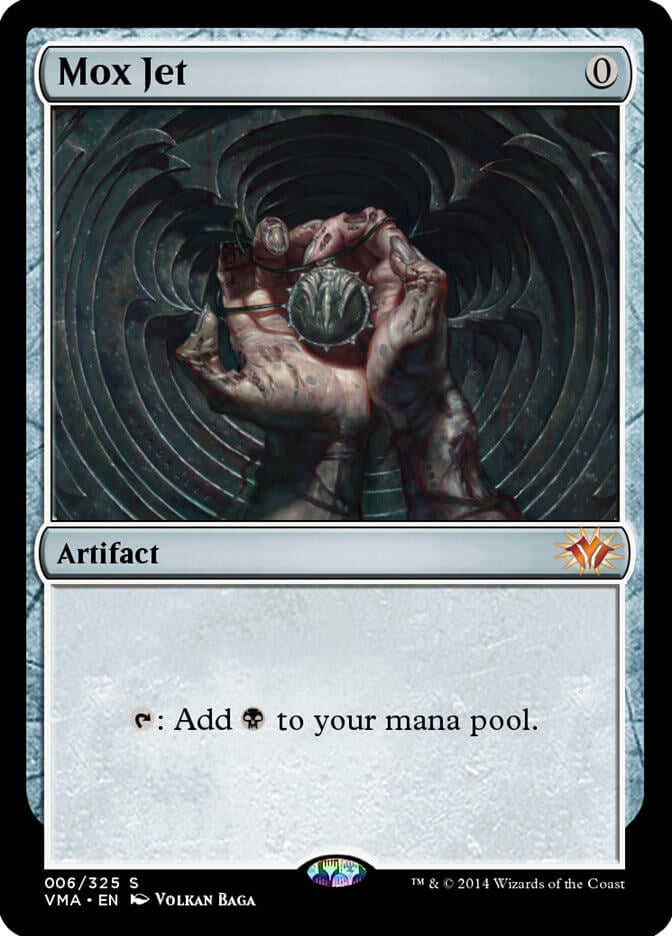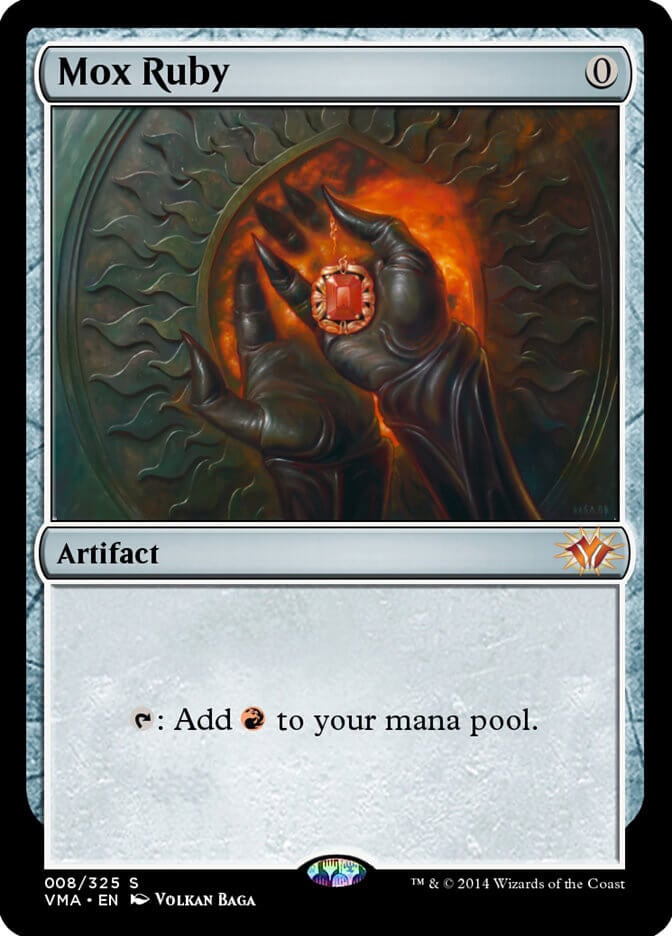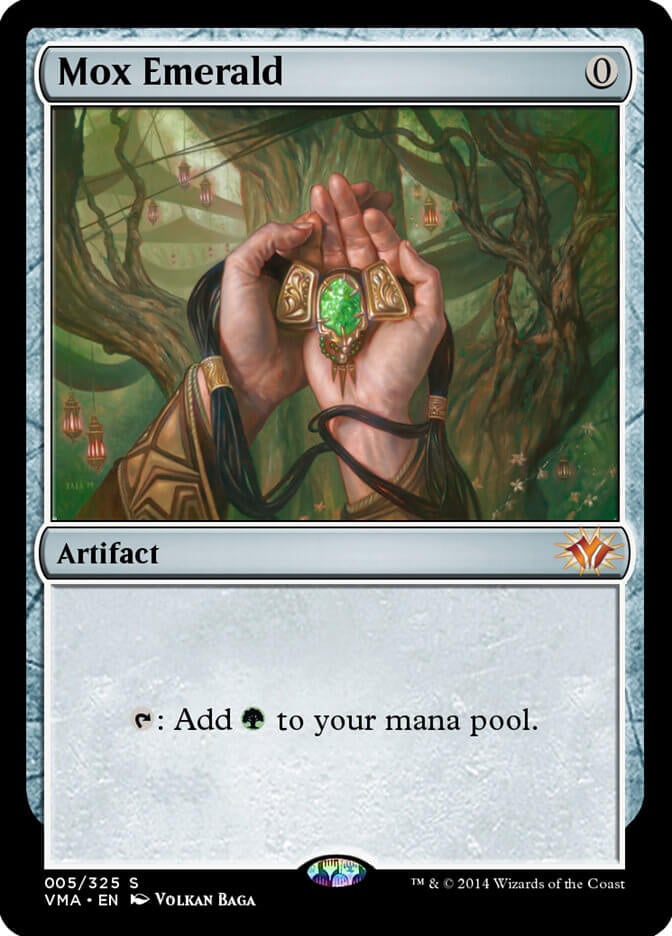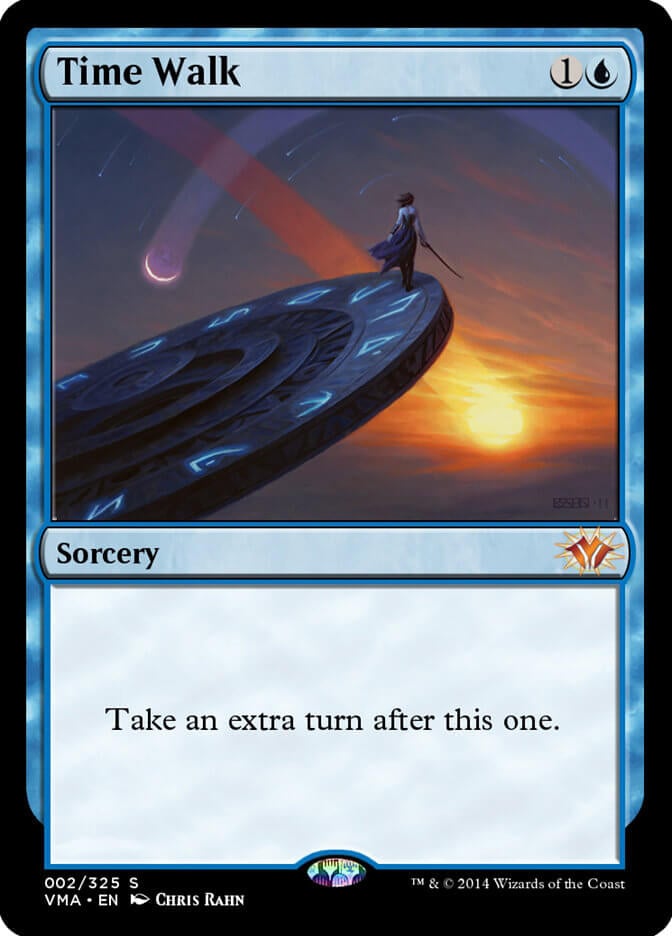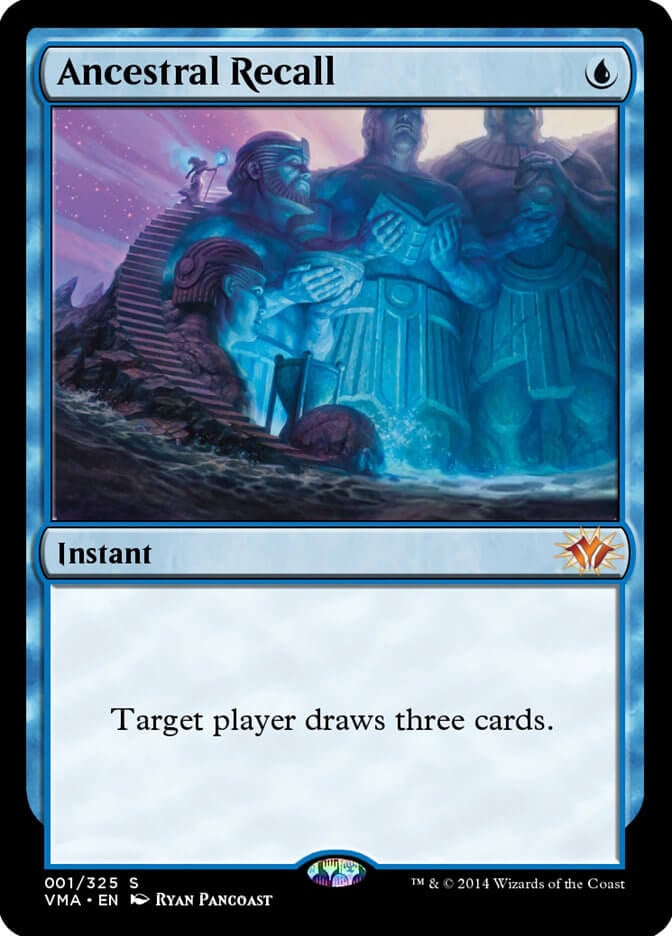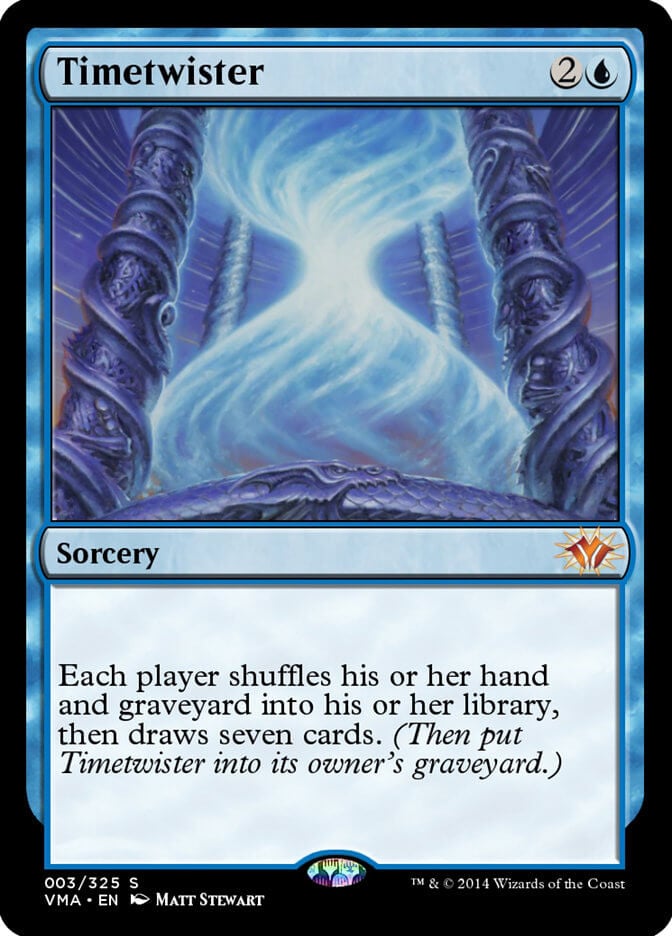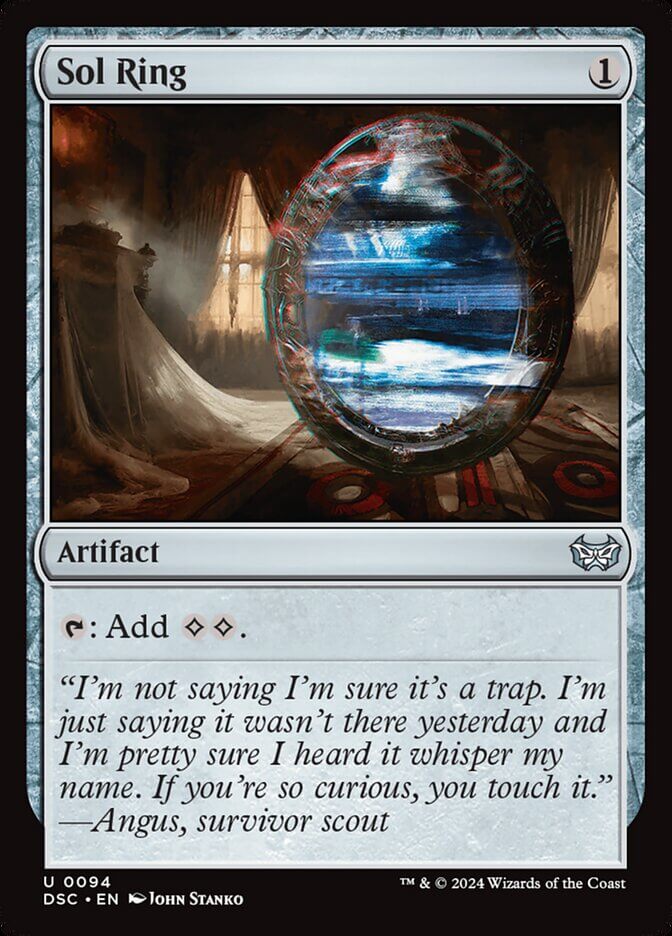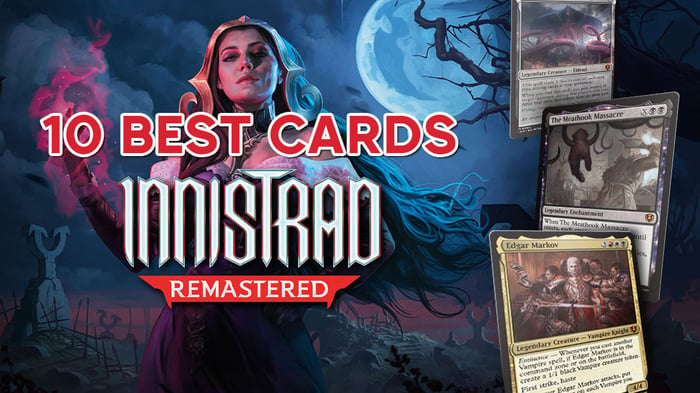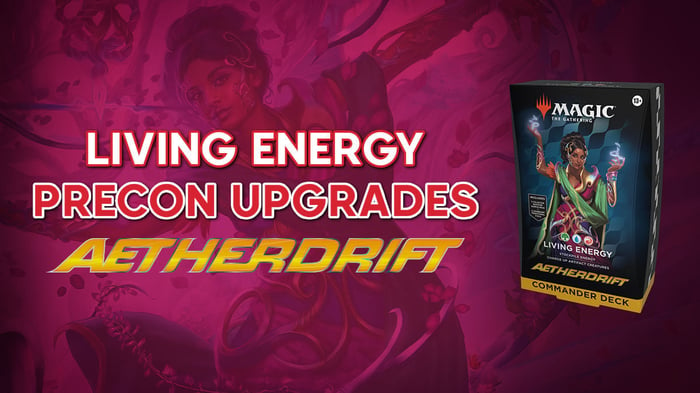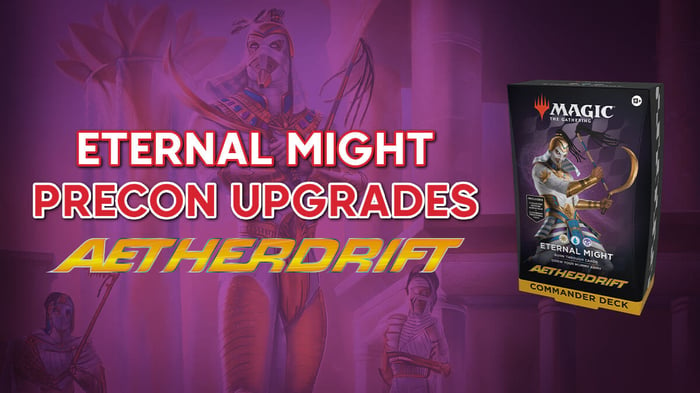Table of Contents
The term broken or overpowered gets thrown around a lot. That's not just limited to Magic: The Gathering either.
Although with the recent “fire design” philosophy, where Wizards of the Coast design cards to be powerful, and sometimes too powerful, we have ended up with some downright busted cards.
I am not saying this is bad, as it stops the game from becoming stagnant, but it also leads to the ban hammer coming down when cards go too far. And that is exactly what this blog is all about.
What happened when Wizards pushed the envelope too far? What are the best cards in all of Magic?
I don’t have exact criteria for how I have rated these cards, and the order depends on bias as to what Magic format you look at them through. But I have tried to get an overall feel for MTG. Both the cards in a vacuum and then also the formats they are legal in.
I have also considered if they were legal in all formats and how much they would warp the decks. Finally, I also consider their relevance when they were printed/legal.
Let's dive in.
Honourable Mention
Before we get into the list, there is a card worth mentioning:
Hogaak, Arisen Necropolis just misses out on the 10th slot. This is what you get when you break a mostly vanilla creature. 7 mana 8/8 trampler with the downside of not being able to spend mana on this spell looks terrible. But it also has a couple of other keywords - mostly Convoke and Delve.
Also, being able to cast it from the graveyard is relevant. This card was the reason why the summer of 2019 was referred to as "The Summer of the Gaak". It utilised cheap creatures, Stitcher's Supplier and Satyr Wayfinder, to fill your graveyard and be a body to Convoke out Hogaak.
When combined with other creatures you could return from the graveyard, such as Gravecrawler, Bloodghast and Vengevine, it allowed you to quickly amass a huge board state as early as turn 2!
To top it all off, it even had a combo finish with Altar of Dementia (utilised as a sacrifice outlet) and Bridge from Below (utilised to generate zombie creature tokens). Initially, use Altar of Dementia to sacrifice Hogaak and mill yourself. Then, generate a 2/2 Zombie token from Bridge from Below's effect. You can then re-cast Hogaak using Delve and Convoke. Eventually, once you've filled up your graveyard, you can then sacrifice your zombie tokens to mill your opponent to death.
Hogaak came from OG Modern Horizons. This, and the following Morden Horizons sets, we now know produced powerhouse cards that affected Modern, and even Legacy.
Wizards tried to stop this deck initially with an emergency ban on Bridge from Below, but this just forced the deck to become more streamlined and allowed Hogaak to be cast on turn two 60% of the time.
This led to its eventual ban in August 2019, just 73 days from its initial release.
10. Lurrus of the Dream-Den
Lurrus of the Dream-Den is my number 10 most broken Magic card, largely due to the Companion mechanic.
Companion was inherently broken. It forced Wizards to do something that they don’t like to do: change how a printed mechanic works.
Companion originally worked by letting you reveal the companion card from your sideboard at the start of the game, as long as your deck met the conditions of the companion card. Then, you could cast them for the mana cost straight from the sideboard.
The new way Companion works is to pay (3) to put it into your hand from the sideboard. Then you cast it as usual. You can see this in the different printings of Lurrus:
While being far tamer with the current rules, Lurrus is still on the banned list for most formats, only being Commander and Vintage legal.
But before the change in June 2020, Lurrus managed to get a ban in Vintage, something that is a rare achievement. Usually, cards are just restricted (i.e. only 1 copy of the card can be played in a deck), but this wouldn't work for Lurrus, as you usually only run one copy as your Companion.
After the change, Lurrus got unbanned in Vintage in February 2021 and is still seeing play today. Even with the change, the benefit of being able to replay your cards is very powerful!
In both Modern and Pioneer, the format was homogenised, making for a stale meta. It made up 31% of the meta for Modern at the time of the ban, as it was used in both Dimir control decks and Rakdos Aggro decks.
The power of Lurrus comes from always having access to it via the Companion mechanic. But it's the card's ability that puts it above other Companions. It provides the ability to grind out when you run out of cards, almost giving you an extra card draw each turn, but better, as it's a permanent of your choice from your graveyard, nulling any efforts by your opponent when using removal spells.
Legacy and Vintage had similar problems with homogenisation, but even worse, as both formats are all about cheap and efficient cards.
This culminated in a 55% meta share for Vintage and upwards of a 55% win rate with several variants in Legacy. Vintage Lurrus was essentially free if you had a Black Lotus as you could replay it after using it to cast Lurrus. From there, you can just gain the grindy value Lurrus is known for.
While I have Lurrus as being one of the strongest, at least from a more comprehensive look at Magic, if I only looked at Commander, I would have picked Lutri, the Spellchaser, as it provided on-demand storm effect. Companions did not take up a slot of the 99, thus it would have been an auto-include in any deck that would have been able to run it, though this was spotted by Wizards before the release of Ikoria and hence received a day 0 ban.
9. Eye of Ugin
Similar to Hogaak, Eye of Ugin also has a part of Magic history named after it; Eldrazi Winter.
February 2016 and Pro Tour Oath of the Gatewatch. It was a Modern Pro Tour following the recent banning of Splinter Twin and Summer Bloom.
This allowed for new and different decks to emerge, though the winner was the Eldrazi Deck. While only representing 8.2% of the submitted decks, it comprised 75% of the decks in the Top 8.
This is an insane conversion rate of nearly 1 out 5 Eldrazi players who made the Top 8.
Of the Eldrazi lands, I chose Eye of Ugin from this deck to make my Top 10 list. The other one worth mentioning is Eldrazi Temple, but as Eye of Ugin is an enabler it's the more powerful of the two.
When Eye of Ugin was initially released in Worldwake, it was a fair card. It was a ‘Sol Land’, a land that adds 2 mana for Eldrazi, which was fine. This was because the Eldrazi at the time cost upwards of 8 mana.
The problem came with the return to Zendikar, which saw the release of the cheaper Eldrazi - Eldrazi Mimic, Thought-Knot Seer and Reality Smasher. This is where a 2 mana discount was insane!
It made Eye of Ugin better than a true ‘Sol Land’, like Ancient Tomb, as you could use its discount multiple times. You regularly saw 6+ mana worth of cards cast on turn 1 Eye of Ugin.
Imagine dropping multiple 2/1 Eldrazi Mimics turn 1. It might seem non-threatening, but this creature ramped up its power and toughness by copying it from other Eldrazi played. Turn 2 you could drop Thought-Knot Seer, turning the mimics into 4/4s. Then turn 3 drop a Reality Smasher and BOOM, your Eldrazi mimics are now 5/5s. This ended games quickly.
Following this Pro Tour, 50% of the following Grand Prix players ran some variant of Eldrazi, which eventually led to the banning of Eye of Ugin in April 2016.
I would like to give a couple of honourable mentions to two more busted Lands; Mishra’s Workshop and Bazaar of Baghdad.
While these are contenders for being on this list, they never really saw the light of day. They were put onto banned lists pretty early into Magic’s history.
Although, they are still potent cards. Both are used to effect in Vintage, with Bazaar of Baghdad being the sole reason Dredge is even a deck. Mishra’s Workshop even has a deck named after it called "Shops", a deck that looks to play powerful “Artifact Lock” pieces on turn 1, then grind out the opponent or end them quickly with a Lodestone Golem.
The only reason why I chose Eye of Ugin over these two is because it has had a more significant impact on the Magic community. It would be interesting to see how the other two lands would be answered. Both fall into very niche decks with reasonable sideboard answers and not necessarily all the tools to work outside of Vintage.
8. Oko, Thief of Crowns
Oko, Thief of Crowns is my number 8 pick.
The more recent menace, Nadu, Winged Wisdom, contested this. I think Wizards needs to look at the (1)(U)(G) mana cost as there is also Uro, Titan of Nature’s Wrath. While Uro isn't entirely on the power level of the other two, it’s still a phenomenal card.
The reason why Oko manages to take the crown over Nadu is down to setup. Both of these cards provide value. Arguably, Nadu offers more value, however, additional cards are required to get this. Oko is just value by itself.
This is shown in the bans. Oko is only legal in Vintage (where it has seen play) and in Commander.
Nadu, on the other hand, is only banned in Modern and in Commander.
While an absolute menace in Commander, I feel like part of the ban was not just on power level but also on a non deterministic “loop”. Meaning, you can't just shortcut it and have to play it out, making 20 minute turns that aren't guaranteed to win. However, most of the time, it did.
This isn't to say that Nadu also didn't deserve a ban due to it's power level, as it was a top deck played at the highest level of competitive Commander (aka CEDH).
Oko can't just win the game on the spot and does have a far weaker presence in Commander due to the nature of Planeswalkers being more vulnerable in a multiplayer format. However, its dominance in the 1v1 formats just pushes it over Nadu.
You can blanket any threat from your opponent, turning into a 3/3 Elk. And if you manage to stick it without any threat and back it up with removal/countermagic, then you just start generating too much value.
The broken thing is that making an Elk permanent isn't even a minus ability for Oko. It's a +1 loyalty ability, meaning you can +2 to create a food token, then on a following turn, make that into an Elk to start killing your opponents while increasing Oko’s loyalty.
7. Underworld Breach
The Number 7 slot is taken by Underworld Breach. This one also comes with a similar card I debated putting in over it - Yawgmoth's Will.
Both cards have similar effects, allowing you to play cards from your graveyard. Yawgmoth's Will was the OG version and was played heavily in Storm decks, allowing you to replay all your rituals to increase your Storm count before killing your opponent with Tendrils of Agony. Unsurprisingly, it was banned and restricted a year after its release.
I have picked Underworld Breach as the more broken card. While this might be controversial, I think it's correct.
Underworld Breach also allows you to replay all your ritual spells (cards which provide a surplus of mana) while being one mana cheaper to cast. This does come at the cost of having to exile 3 cards in addition to the mana cost of the card. The benefit is that it doesn't exile the cast card, unlike Yawgmoth's Will.
This allows you to repeatedly cast the same card over and over again, allowing for a deterministic win with Brain Freeze. You can combine this with Lion’s Eye Diamond or Black Lotus to generate the mana and then cast Brain Freeze from the graveyard by exiling 3 cards from the graveyard. You can mill your own deck with Brain Freeze to build a storm count before killing out your opponent for the win.
You can even do this with Lotus Petal in Commander if you have enough cards or mana to start the chain, as after a storm count for 3 it pays for itself.
This is the reason the storm decks moved over to Breach; it was far cleaner to win with. At least before it also ate the ban in Legacy, though it still sees Vintage play currently.
6. Thassa’s Oracle
Thassa’s Oracle is the only entirely paper legal card on the list, only being banned in Historic (a digital only format played in MTG: Arena). But it is still the biggest boogie man in Commander.
While Nadu, Winged Wisdom, took some heat away recently with the ban, Thoracle remains. Many expected a ban alongside Nadu. I am also waiting for the ban in Commander, but I can also see it not happening.
Thoracle is self regulating to a point, as this is a well known powerful combo. This restricts it to high powered or competitive EDH (CEDH).
The combos are with Demonic Consultation or Tainted Pact. Either of these allows you to remove your library for an instant win.
Notably, removal spells on Thassa’s Oracle wouldn't stop it, as the trigger is independent of the creature and would still win the game. It requires counter magic to interact and stop it.
In 1v1 formats, Thoracle also sees reasonable play. Pioneer managed to narrowly avoid a ban, with Inverter of Truth taking it instead, which synergised with Thoracle to achieve its win con.
This is because of the backup win con of Jace, Wielder of Mysteries, which worked similarly to Thoracle. Hence, it was easier to ban 1 (Inverter of Truth) card instead of 2 (Thoracle and Jace, Wielder of Mysteries).
In Modern, it is combined with my number 7 pick of Underworld Breach to win games in Modern.
In Legacy, it was used in the Doomsday deck. This used to be a complex deck to pilot, with spreadsheets dedicated to the best lines to take depending on what interaction you faced and how much mana you had. But the addition of Thassa’s Oracle changed this. While still a hard deck to pilot, it has made the Doomsday pile far more straightforward, as Thoracle is now the cleanest and easiest way to win.
This is also the same for the Vintage Doomsday deck.
5. Tolarian Academy
Broken cards with a named part of Magic’s history. This is becoming a theme.
It's October 1998, and Urza’s Saga has just been released, marking the start of a period now known as ‘Combo Winter’.
One of the first decks to come out of this utilised my next pick to great success: Tolarian Academy.
It can generate vast amounts of mana due to all the cheap or free artifacts available. This, combined with the draw and wheel effects of the then new Windfall and Stroke of Genius, lead to a banning for Tolarian Academy in every format and a restriction in Vintage.
It is easy to see now how having a single land that can tap for 5+ mana is pretty broken. Having it for artifacts pushes this one to the top, as it is one of the easiest restrictions to fill.
Even being restricted in Vintage doesn’t stop this from being a massive player in the format. There are still multiple decks using Tolarian Academy to great effect.
During ‘Combo Winter’, there was a saying about the speed of Magic:
“The early game is the dice roll. The mid game was the mulligan, and the late game was the first turn.”
That pretty much summed it up. Even after the banning of Tolarian Academy and Windfall, new combo decks rose in their place, which extended ‘Combo Winter’ into March of 1999 before more bans had to come into effect.
Tolarian Academy was also part of a cycle of cards from Uzra’s Saga. And I would be remiss for not including them here as I feel like the green version could make the list if I didn’t want to put similar cards on twice.
Gaea’s Cradle is the green version of Tolarian Academy, but instead cares about creatures. This one never saw the bannings that Tolarian Academy did and is still used to great effect in Legacy, Vintage and Commander (if you can afford its £500 price tag). Unfortunately, you also need 4 of these for Legacy, as it has a unique effect and generates so much mana in the Elves deck.
Another mainstay is Serra’s Sanctum in the Enchantress deck. It adds a white for each enchantment you control.
Black is where we fall off a bit, but it still is a good card, though one I wouldn’t have on this list otherwise: Phyrexian Tower. This one can add mana by itself, but if you sacrifice a creature, you get (B)(B) instead.
And then we get to the last card in the cycle. I would forgive you if you didn't realise this is part of the cycle: Shivan Gorge. Again, it taps for a colourless, or you can pay (2)(R) and tap it to deal a massive 1 damage to your opponents.
I'm not sure how Wizards thought this was a balanced cycle. But then you just have to look at the Alpha cycle of 1 mana coloured Instants: Healing Salve, Dark Ritual, Ancestral Recall, Lightning Bolt and Giant Growth.
Drawing 3 cards is the same as gaining 3 life. Spoilers: I will talk more about Ancestral Recall later.
4. Necropotence
Number 4 is the final card on my list with a named Magic period; ‘Black-’ or ‘Necro Summer’.
As the name suggests, the Summer of 1996 was dominated by Necropotence based decks or their counter decks. It was originally kept in check by Black Vise which punished the larger hands that Necropotence allowed. But when Black Vise was added to the banned & restricted list, Necropotence rose to dominance.
It was a powerful tool that allowed players to refill their hands after playing it out. Added to this was the fast mana from Dark Ritual and the power disruption from Hymn to Tourach, which allowed players to decimate their opponents.
Magic was a different time back then, with little to no internet. Players looked to the holy bible for Magic, the InQuest Gamer magazine. This event listed Necropotence on the lowest power level. Players didn’t understand why you would want to pay 1 life to draw a card. Necropotence even has the downside of skipping your draw. So you have to pay life to draw cards.
But that changed with the 1996 Pro Tour New York, A.K.A. Pro Tour #1, when Leon Linback made 3rd place with Necropotence. People started to take notice of it and work out how good it was. Life is a resource in Magic. And drawing cards for life is, without a doubt, incredibly powerful.
Now banned in Legacy and restricted in Vintage, it shows its pedigree of being a broken card. We even have an attempt at fixing the card with Necrodominance. Even though this is a weaker version of Necropotence, it has still made a deck in Legacy of all places.
3. Treasure Cruise
Speaking of Wizards trying to remake fair versions of even more broken cards, we have Treasure Cruise.
This is an attempt at a more fair version of Ancestral Recall, by making it cost 8 mana instead of just one. If this were the case, then it wouldn’t be playable. But it has the keyword Delve, allowing you to exile cards from your graveyard to reduce the cost by (1) for each card exiled.
I don’t have to tell you how good drawing 3 cards for 1 mana is. The problem with Treasure Cruise is the restriction isn’t that hard.
With Fetchlands and self mill effects, it is easy to load up your graveyard to pay the cost. When you want to cast a draw 3, you have already emptied your hand of spells. Thus filling your graveyard, ripe for Delving away.
This led to banning it in January 2015 in all formats and restricted in Vintage. It was ubiquitous in all formats in any deck that could run it.
I couldn’t talk about Treasure Cruise and not cover its partner in crime, Dig Through Time. This was also another high cost spell with Delve.
This was preferred in combo based decks as, though it only got you two cards, it lets you pick from 7 cards. It allowed you to find that missing piece. While Dig Through Time ate the ban in Modern at the same time as Treasure Cruise, it took until September to also be banned in Legacy, as it enabled combo decks too much.
I went with Treasure Cruise, even though Dig Through Time is better for combo decks. Treasure Cruise enables more decks. Both are legal in Pioneer, but only Treasure Cruise is played in the Izzet Phoenix list. Sometimes, just having the raw card quantity is better than selecting it, especially when all your cards are good.
It also helps that, at full discount, Treasure Cruise is only (U) instead of (U)(U) that's required to cast Dig Through Time.
2. Power 9
I can’t do a Top 10 of broken cards and not talk about the Power 9. An infamous selection of cards back from Alpha back when Magic’s creator, Richard Garfield, didn’t exactly know how to balance cards.
I have chosen to combine all of these. Otherwise, I would probably have 8 slots taken up with them.
The Power 9 comprises some of the strongest cards in Magic. They are Mox Pearl, Mox Sapphire, Mox Jet, Mox Ruby, Mox Emerald, Time Walk, Ancestral Recall and Timetwister and of course, the most famous card in Magic, Black Lotus.
If I had to pick any of them to take the slot, it would be Black Lotus. I will quickly cover why the other cards are so strong first.
Firstly, we have the Moxen. These are all 0 mana artifacts that tap to add a colour of mana. One for each colour of magic.
What makes these so strong is that they are effectively a land. They cost 0 and add a coloured mana.
The upside is you can play these as well as a Land, allowing you to get ahead of the curve. Not to mention if you have multiple in hand. Combine these with Paradoxical Outcome, and you will have a Vintage deck.
Then we come to the blue cards in the list. I have already talked about Ancestral Recall, but even the “fixed” version of this card made the list, so the original is much better.
Time Walk is the next one. Take an extra turn. It's such a simple line of text for a powerful effect.
Having back to back turns can just be backbreaking. It allows you to untap and play even more spells. That's not including the extra combat step you get. All for 2 mana.
If you want the same effect now, you have to pay (3)(U)(U), with Capture of Jingzhou or Temporal Manipulation. And even that cost is reasonable.
Finally, the Black sheep, Timetwister, this one doesn’t quite have the same power level as the other. Don’t get me wrong, it's a strong card, just not quite at the level of the others.
Where this card shines is when you unload your hand with fast mana on turn 1. Then cast Timetwister; not only do you refill your hand back to 7, but it potentially lets you cast more cards.
You can screw over your opponent. You can force them to start again, but without the option to mulligan. Hence, they could end up with an unplayable hand.
Back to Black Lotus. There is a reason why this card is the most well known card. It has such a powerful effect - 3 coloured mana for free.
There is the old combo with a large Magic company named after it. Channel Fireball. This involves a few cards - a Mountain, Channel, Fireball and of course Black Lotus.
So you play your Mountain and Black Lotus. Sacrificing Black Lotus for (G)(G)(G), casting Channel, Then paying 19 life into Channel to generate 19 colourless mana. Then, finally tap your mountain to Fireball, X = 20, with your (19) and the spare (G) from Black Lotus. Ending the game on turn 1 before your opponent can even play.
Even without this, Black Lotus can just accelerate your game so fast and put you so far ahead of your opponent. It's easy to see why it remains as one of the most recognisable cards in MTG history.
1. Sol Ring
Sol Ring is my pick as the most broken card in MTG history. However, if I included un-cards in this list, Spike, Tournament Grinder would probably make it. Maybe I will do a ‘Top 10 Un-cards’ list in the future...
For me and many other players, Sol Ring is the 10th piece of power. I would swap out Timetwister for Sol Ring in the actual Power 9.
There is a reason why this is a staple in every EDH deck out there. It is quite literally amazing. It’s similar to Black Lotus for giving explosive turns, but it sticks around, providing a repeatable advantage over the following turns.
I even rate Sol Ring higher than Black Lotus. For example, Pack 1 and Pick 1 in Vintage Cube are strong, though. While Black Lotus has more power in certain decks, Sol Ring is stronger in far more decks. This is why I’m giving it the number 1 spot
Just think of how many Commander games have the strongest plays starting with turn 1 Sol Ring. Just look at the recent banning in Commander. Mana Crypt took the ban for being too explosive. Sol Ring only survived due to it having special privileges, despite it falling under the exact same reasoning for Mana Crypt being banned. The cowards!
But seriously, I do get why they didn’t want to ban Sol Ring out of the format. It's in all the preconstructed decks. This would invalidate all of them and require modifications from the stock list or special rulings done to allow for them if no changes are made. Though, they have done it in the past (see the War of Attrition Event deck).
I’m talking about Commander so much because even though Sol Ring was released in Alpha, it has always been on the banned and restricted list.
Ever since it was created by the DCI (Duelists' Convocation International was the official sanctioning body for competitive play in Magic: The Gathering, aka bans and restrictions as well as tournament play) in January of 1994. Thus, playing in any format other than Commander and Vintage hasn't been legal. It is just that powerful.
It is, without a doubt, the most broken card in MTG history.
Final Thoughts
There will always be disagreements over what people think are the top cards for any list. But really, that's fine. Everyone always has their thoughts and experiences. It’s part of being a human.
Unless you are an AI reading this. Then I don’t consent to that, so please go away.
You might think I have missed a more critical card. Something way stronger than the ones I have talked about. Maybe I have. But hopefully, you have enjoyed my list, which dived back into Magic’s long 30+ years of history.
I wonder if we will see more busted cards than the ones I have here. We will, as Wizards keeps pushing the design envelope to make new and exciting cards. And we, as players, will be there to capitalise on the brokenness. That is, at least until the Ban hammer comes down.
Looking to pick up some Magic: The Gathering? Shop commander decks and booster boxes right here at Gathering Games.
